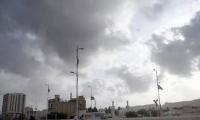As prime minister Imran Khan overseas a rudderless government, the trend surrounding Pakistan’s economy can easily be summed up in two words – uncontrolled chaos.
On Wednesday, the de facto finance minister Shaukat Tarin sought to give a positive spin to a largely uncertain outlook, with news of Saudi Arabia lending U$4.2billion in a mix of a loan and deferred payments for oil shipments to Pakistan. For the moment, this may shore up Pakistan’s bleeding foreign exchange coffers though just temporarily.
In sharp contrast to the official spin of the Saudi gesture being a fruit of Khan’s recent travel to the oil rich desert kingdom, the offer comes with an uncertain future. The history of Saudi largesse in the recent past must serve a useful lesson for the future.
In August 2020, the Saudis quickly recalled a U$3b loan after foreign minister Shah Mehmood Qureshi demanded a meeting of the Saudi dominated and largely toothless OIC (Organization of Islamic Cooperation) to discuss conditions inside Indian administered Kashmir. At the time, a facility to defer payments for Saudi oil shipments to Pakistan was also frozen.
In the short term, news of the Saudi loan has begun reducing recent pressure on the Rupee, helping the Pakistani currency regain some of its lost ground. That may be a step back from central bank governor Raza Baqar’s controversial recent statement on a visit to the UK, where he practically showcased the recent slide of the Rupee as a moment of joy for expatriate Pakistanis who send precious foreign remittances back home.
Meanwhile, notwithstanding Tarin’s remarks on Wednesday claiming that Pakistan remains close to an agreement with the IMF to resume payments under a U$6b loan, the future looks uncertain at best. News from Washington comes with a telling writing on the wall – a return for Pakistan to receive further payments from the IMF will likely come with painful conditions that are set to hit the public at large.
Already, higher tariffs for energy are on the cards. And while the rulers repeatedly claim the downside risk emerging from high global commodity prices driving adverse conditions across Pakistan, their claim is just part of the story.
Within Pakistan, a failure to tackle a variety of issues ranging from relations with the army-the recent matter of discord over the appointment of a new head of the ISI- to executing policies at large, have together undermined the government’s credentials. Ultimately, with Pakistan’s outlook looking increasingly in disarray, the economy’s future must remain surrounded with many questions.
On Tuesday, protests by Islamabad based traders against documentation of their revenues revived a powerful and chronic trend. It was a reminder of the powerful reality that across Pakistan there is a large community of individuals who continue to refuse documenting their business revenues. Tuesday’s protests coincided with continuing protests by the Tehreek-e-Labaik Pakistan or TLP whose demands include a severance of ties with France over the publication of blasphemous material in a French publication. Together, such unrest on the streets has already hurt confidence among investors who must be shown a longer term vision of stability before they step ahead.
And going forward in to Pakistan’s next election cycle in the run up to summer 2023, the turbulence surrounding the economy is set to grow. On the one hand, the Khan government has already made controversial choices, notably an amnesty for the construction sector that allows investors to withhold the source of their investors. The ‘no questions asked’ policy has unsurprisingly drawn criticism of presenting a platform for money laundering in Pakistan.
And on the other hand, if the buzz around Pakistan’s financial sector is to be believed, the government may back questionable initiatives such as bank loans for small to mid sized borrowers, practically without hard collaterals. If so, that would tragically be a step further removed from reality beyond the ‘sub achha’ or 'all will be well' emerging chorus from official quarters. At the very least, Pakistani banks must remain protected from pressure to lend on the back of politically driven loans to populist causes.
Ultimately on the streets of Pakistan, two images of a single country say much about the state of Pakistan. On the one hand, the recent relaxation on luxury imports, notably fancy new cars, has led to the arrival of a variety of newer vehicles including those previously unseen in Pakistan. But in stark contrast on the other hand, low to middle income households continue to be hit badly with recent inflation, notably surrounding food items. And for savers, notably pensioners with their life long savings in bank accounts, the net returns are below the annual rate of inflation.
Meanwhile, the crisis of governance is seen nowhere more profoundly than across the Punjab – home to about 60 per cent of Pakistan’s population. Led by Usman Buzdar, prime minister Khan’s almost blind loyalist, the chief minister has overseen probably the worst breakdown of administrative order and governance witnessed in the history of the Punjab.
In a nutshell, with or without injection of financial support such as the latest contribution from Saudi Arabia, the chaos surrounding Pakistan’s challenged economy shows few signs of ending in the foreseeable future.
PTI maintain leading position in NA elections, with narrow lead of one percentage point over PMLN
Nationalists say province's resources, land, and water were being sold under guise of development







